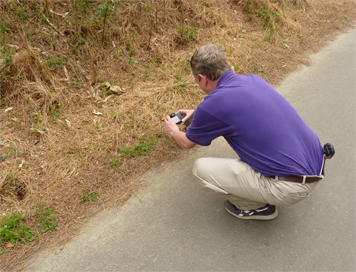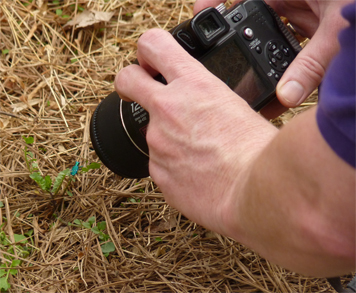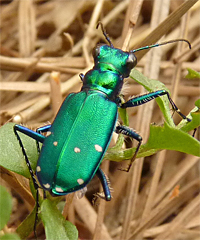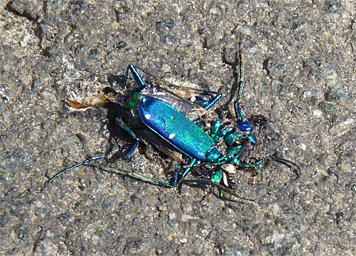What’s Richard Stickney, Lead Conservatory Associate here at the Museum, doing?

He’s photographing a tiger beetle.


It’s a Six-spotted Tiger Beetle. If you’ve read the last post about these beetles you would have seen a picture of tiger beetle parts on the path. By reading the text you may have come to think it would be difficult to get as close as Richard is (above) to this species of beetle, being swift of foot and wing as those beetles are said to be, and my experience with them had shown them to be.
But, I may have been very wrong about the swiftness of these beetles, at least as far as our Six-spotted Tiger Beetles here at the Museum are concerned. Richard and I followed the tiger beetle in the above photos for several minutes and it allowed very close observation, as you can see in the photos. I’ve gotten close to these beetles before, but this was exceptional.
Later in the day, I found a tiger beetle that had apparently been stepped upon by a passerby.

To test the wariness of these beetles, I followed yet another tiger beetle that same afternoon. I made false attempts at stepping on it. I wanted to see how close I could get to stepping on it before it flew or ran off. I could have easily created another blue-green spot on the path (but of course I didn’t).
Could it be cool temperatures that have our beetles moving so slowly? It was in the mid-seventies on the day in question. Mid-seventies seems warm to me. These are spring beetles, used to cooler temperatures, so I’m not sure temperature was the culprit here.
There is much to learn about our wild creatures.